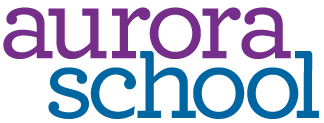Middle School (6-8)
Aurora Middle School recognizes tweens need a safe space to engage in critical thinking, explore new topics, collaborate with peers, develop leadership skills, and grow with experiential learning driven by activities and excursions. In fact, we've perfected the model.
Our program supports emotional wellness, promotes purposeful, engaged learning, and lets students know their voices are honored and respected as they achieve academic excellence. Our small class sizes allow for individualized attention for self-advocacy, creativity, and confidence. Students who come from small school environments excel in large high schools because they’ve built a strong sense of self, they have confidence and they’ve had multiple leadership opportunities.
Our middle school program is rooted in proven best practices in adolescent neuroscience and psychology, and specifically designed to meet tweens’ and adolescents’ unique cognitive and emotional needs. Unlike other middle schools, the pillars of our program combine challenging academics, real-world application, life skills, and leadership development in an environment designed to build confidence and a strong sense of self, qualities needed in high school and beyond.
All of our 2024 graduates were accepted at their first-choice high schools, including The Athenian, Bentley, St. Mary's College Prep, St. Joseph's Notre Dame, Moreau Catholic, Holy Names, and Orinda Academy.
The Five Pillars of Aurora Middle School
Academic Quests
Our humanities and STEM programs are designed to cultivate the advanced mindsets, essential habits, and research skills necessary for deeper understanding and mastery of these topics. Six-week quests start from questions like "Where does food come from and why does it matter?" or "How can we as podcasters persuade adults to read banned books?" Working together, students use foundational research skills to brainstorm, test hypotheses, gather data, and create culminating presentations to share their findings, and ways to make a social impact.
Students also take math class by grade four days a week, where classroom instruction is supplemented with hands-on activities and practical applications.
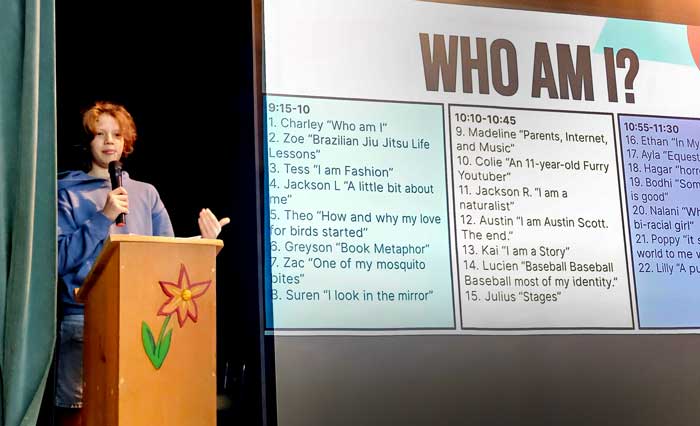
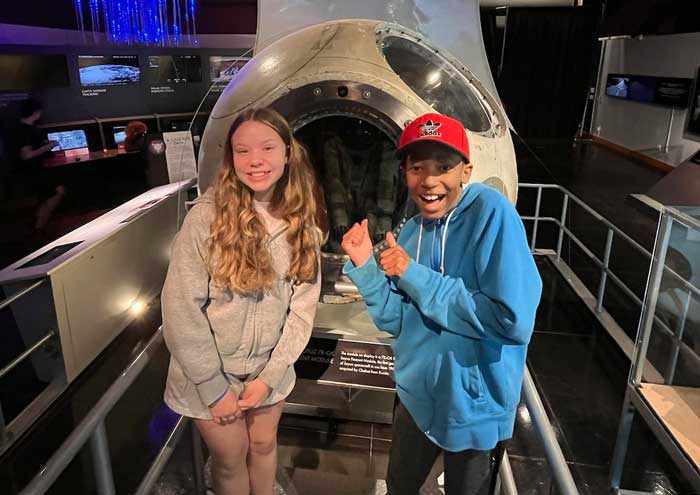
Learning Excursions
We bring the practical applications of academic topics to life through thrice-monthly excursions which integrate classroom and experiential learning. Students visit places like Angel Island (to study the immigrant experience), the Lakeview Village tiny home community (to devise ways to address homelessness), Skyline Studios (to learn podcasting techniques for a unit on banned books), and UC-Berkeley’s Disability Cultural Community Center( to develop a presentation on the disability rights movements). The experiential component empowers students to understand not just the topics of study, but how they apply in the real world.
Advisory
Another benefit of a small school environment for middle schoolers is the ability to foster and nurture relationships with adults in safe spaces. At Aurora, students meet with the same faculty advisor for an hour a week, staying with the same advisor throughout middle school.
As a group, they practice mindfulness, discuss age-appropriate topics relevant to them, prepare for high school and college through habit- and skill-building, and dive into topics from our Diving Boards Curriculum.
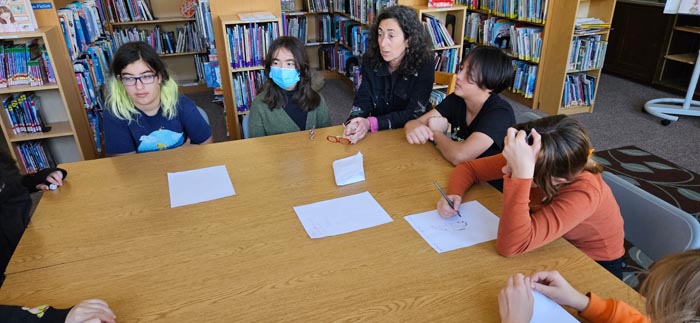
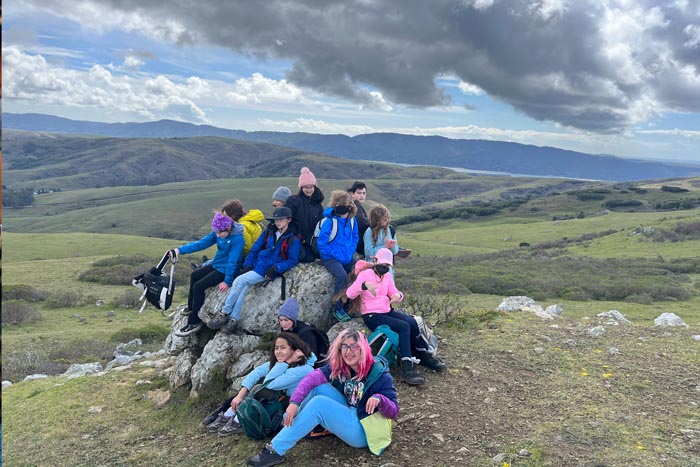
Outdoor Education
In s world where technology has many young people glued to screens, research is increasingly demonstrating the importance of outdoor activities for mental, physical, and emotional health, as well as leadership development.
Twice each year, our middle schoolers experience multi-day wilderness adventures where they build community while studying science and nature. They also go on outdoor Excursions integrated with their Quests in STEM and humanities which include kayaking, rock climbing, environmental testing, and foraging.
Life Skills & Leadership
Once a month, middle schoolers participate in a Life Skills and Leadership Day, leading clubs for second through fifth graders and participating in skill development programs of their choice including culinary arts, coding, digital arts, and mentoring in lower grade classrooms.
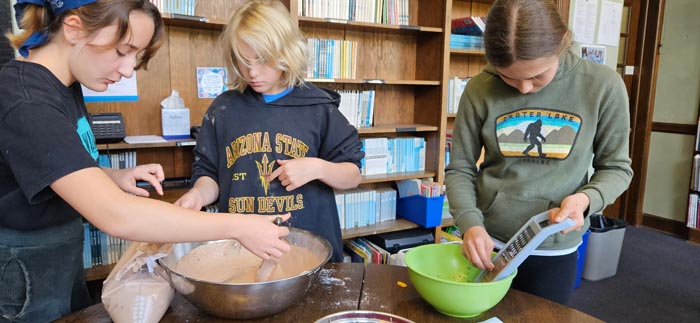
At Aurora, student well-being and development are at the forefront of everything we do, and our programming reflects our commitment to ensuring every student is empowered to fulfill their potential.
Faculty
A different approach to learning requires a different approach to teaching. Instead of being “sages on the stage,” our faculty serve as “guides on the side.” Guides in STEM, humanities, and math work with students in small groups and one-on-one. Learning is experiential and project-based. Guides faciltate cooperative dialogue, based on asking and answering questions, to stimulate critical thinking and to draw out ideas and underlying presuppositions. As the instructors of content, Aurora Guides are mirrors, models, and mentors working as coaches for students as they learn.
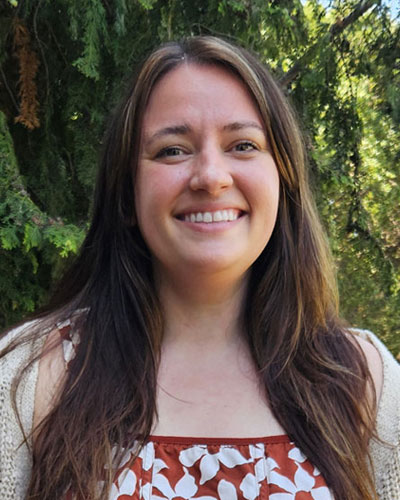
Lynsey Kamine
Humanities Guide
Video: Lynsey teaches Humanities
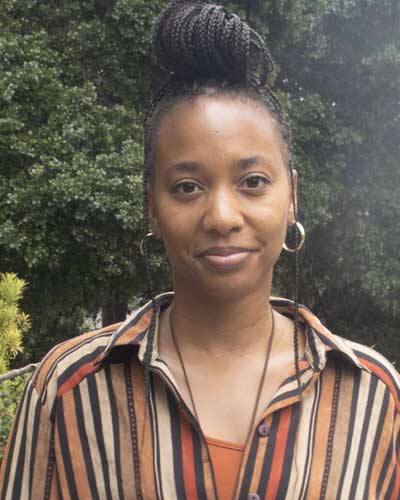
LaCardia Walker
STEM Guide
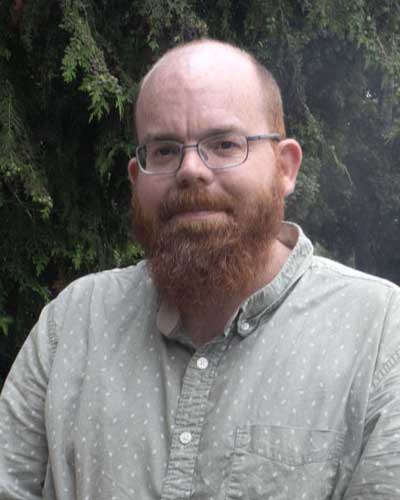
Dr. Tom Howard
Math Guide
Specialist Classes
In addition to humanities, math, and STEM, Aurora Middle Schoolers study Spanish, art, woodshop, band and physical education.
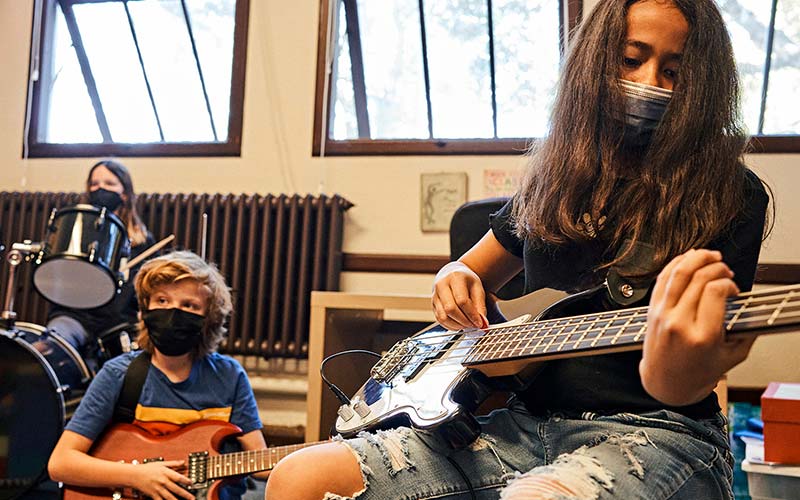
Band
Aurora’s Middle School Band is tailored to the talents of each student. Our multi-talented Music Specialist Moisés Osorio has middle schoolers put their knowledge to use in a band. Students choose the instrument they want to play, whether it be one they already know how to play or a new one and they learn how to play together. All students also learn how to play the ukulele. The Middle School Band performs at school events and assemblies.
Physical Education
A sound body means a sound mind. In addition to intramural sports offered in conjunction with other East Bay independent schools, and daily breaks in our Yard, Greenspace, and Garden Forest, middle schoolers have physical education class twice a week. The focus is on team building, individual goal setting, and tuning in to the needs of one’s body. They play all kinds of sports and games with a focus on sportspersonship.
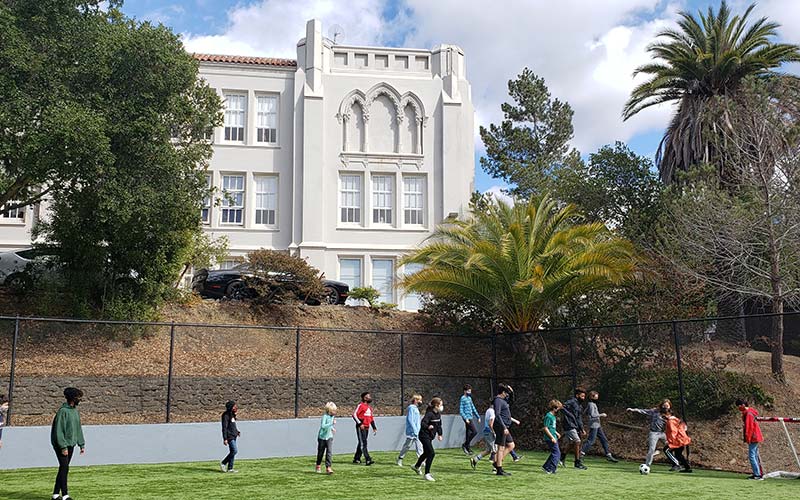
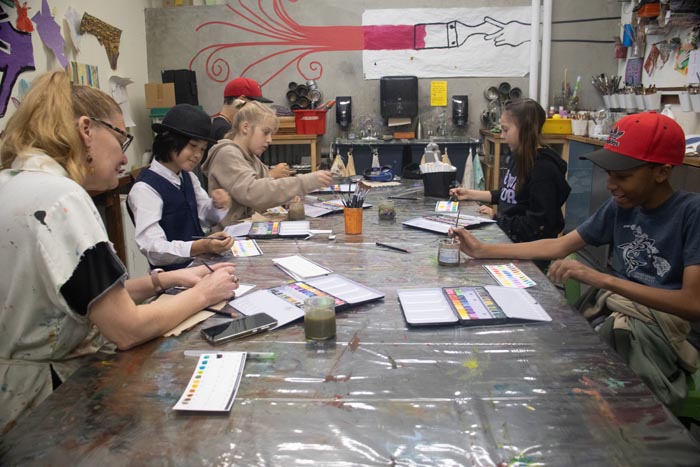
Art
At Aurora, our art room motto is “Take Risks & Make Mistakes.” Students study art and artists from around the world, flex their “mistake muscles” and let their creativity soar. The process of discovery and self-expression is emphasized over the final product. Art projects are often integrated with STEM and humanities Quests so that students can deliver their findings in a diverse range of media.
Spanish
Aurora’s middle school Spanish employs a well-rounded and immersive learning experience that encompasses mastering grammar, verb conjugation practice, listening comprehension, engaging videos, and interactive games. Our curriculum is thoughtfully sequenced to foster a deep understanding of the Spanish language, enabling students to develop essential language skills across multiple dimensions and an understanding of and appreciation for Spanish-speaking cultures.
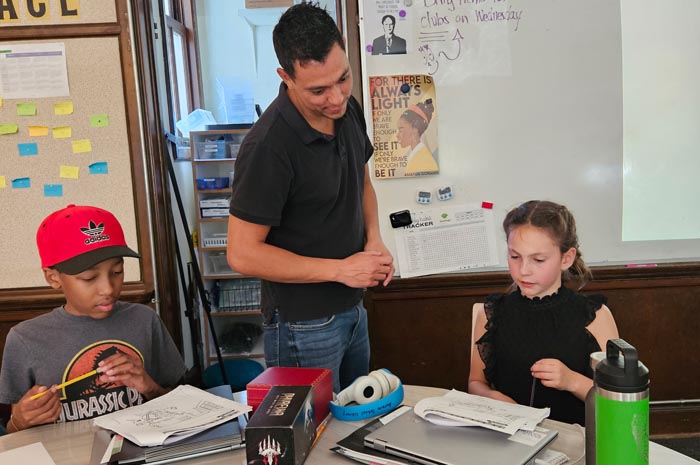
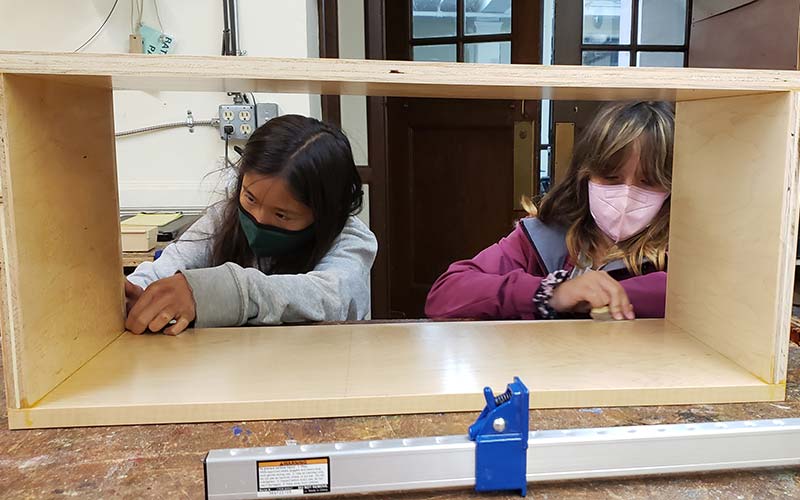
Woodshop
Aurora’s goal is always to make learning come to life, and to have students learn by doing. For middle schoolers, woodshop projects are focused on fun and useful deliverables. At the start of each year students create their own lockers. Other projects include finely-crafted model ships and curio boxes. Design thinking, math, and science are all a part of woodshop class.
Athletics
Our middle school students have the choice to play sports in an intramural middle school league. Sports include flag football in the fall, basketball in the winter, and volleyball in the spring. We team up with another independent school to create a team and experience greater social opportunities. There’s a wide range of abilities and this league is a safe place for students who have never played these sports before to learn how and have fun!
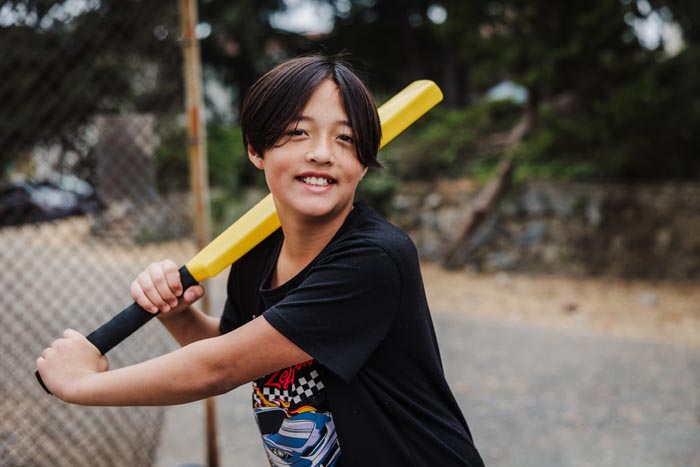
Where Do Our Students Go?
- Head Royce
- Oakland Tech
- Bentley
- Skyline
- Athenian
- Berkeley HS
- El Cerrito HS
- Maybeck
- San Leandro HS
- Orinda HS
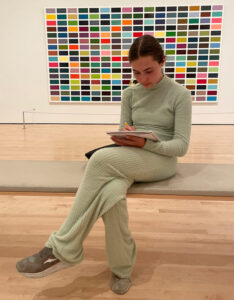
- Urban School of San Francisco
- College Preparatory School
- The Bay Model School
- St. Mary’s College HS
- Bishop O’Dowd HS
- Holy Names HS
- St. Joseph’s HS
- Moreau Catholic
- Orinda Academy
- El Cerrito HS
To find out more, please visit our Admissions section, schedule a tour,or email our Director of Admissions Summer Lee at slee@auroraschool.org.

